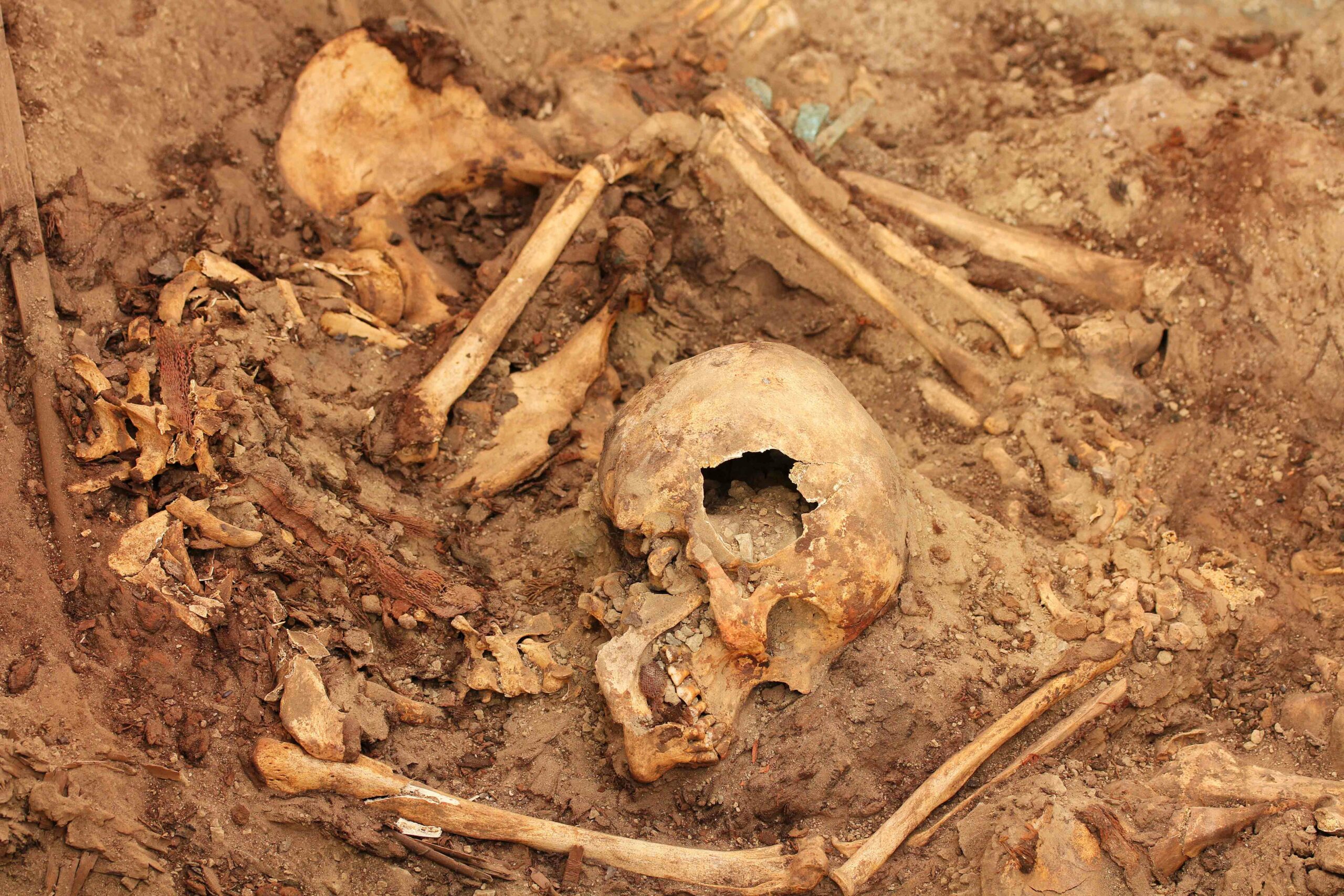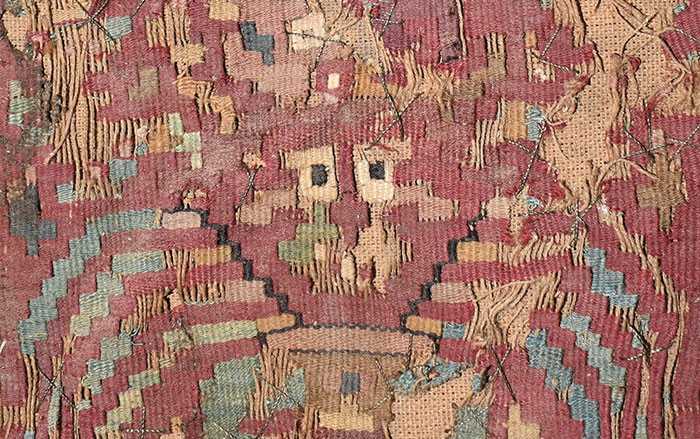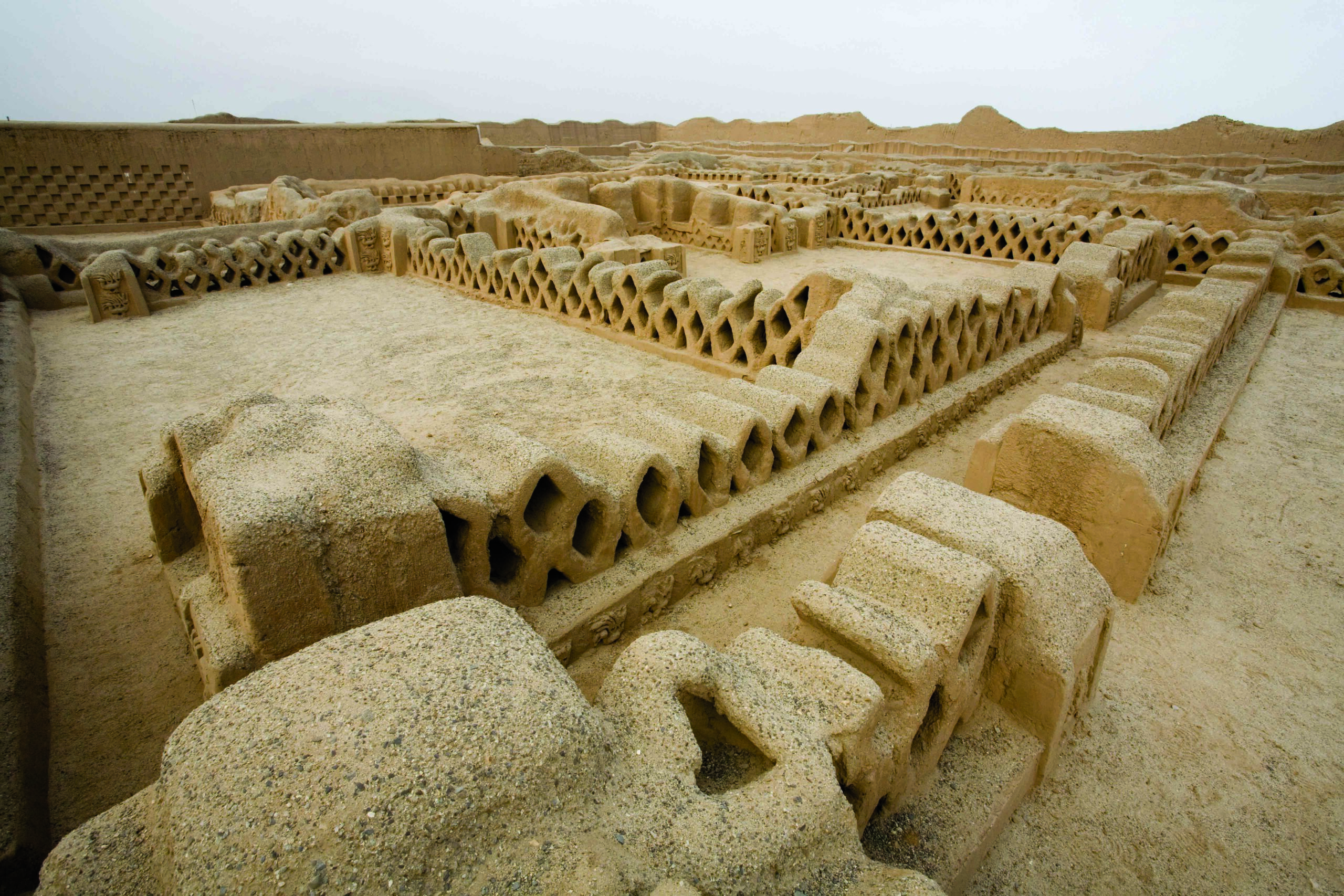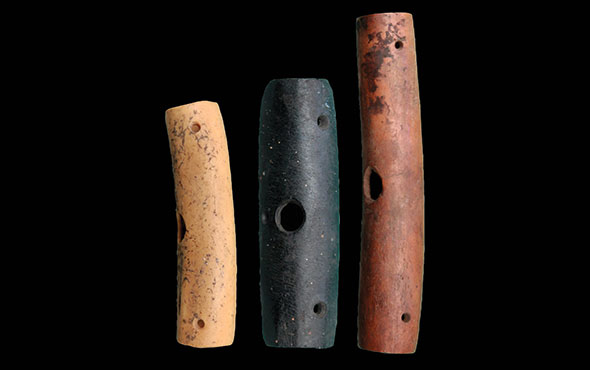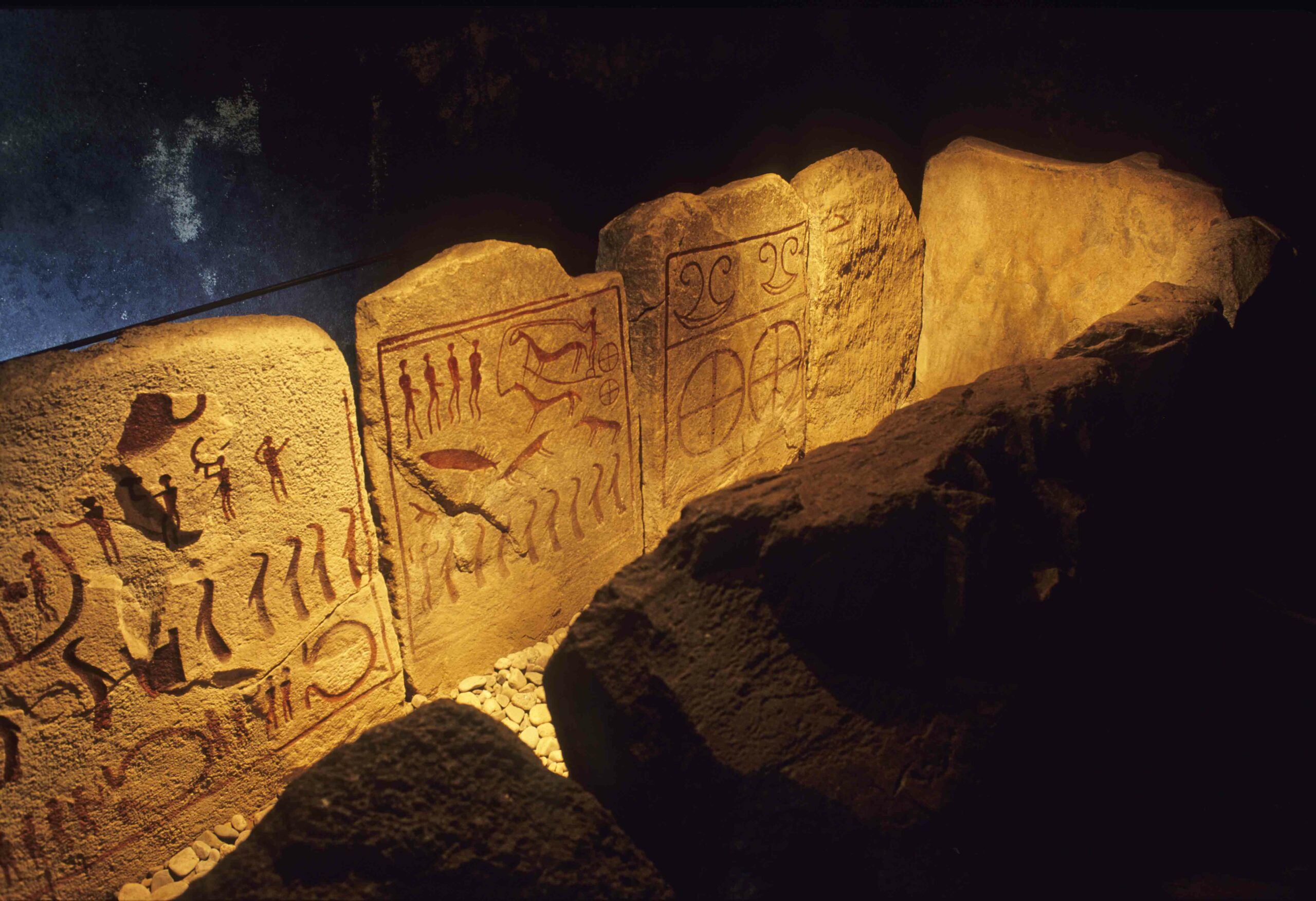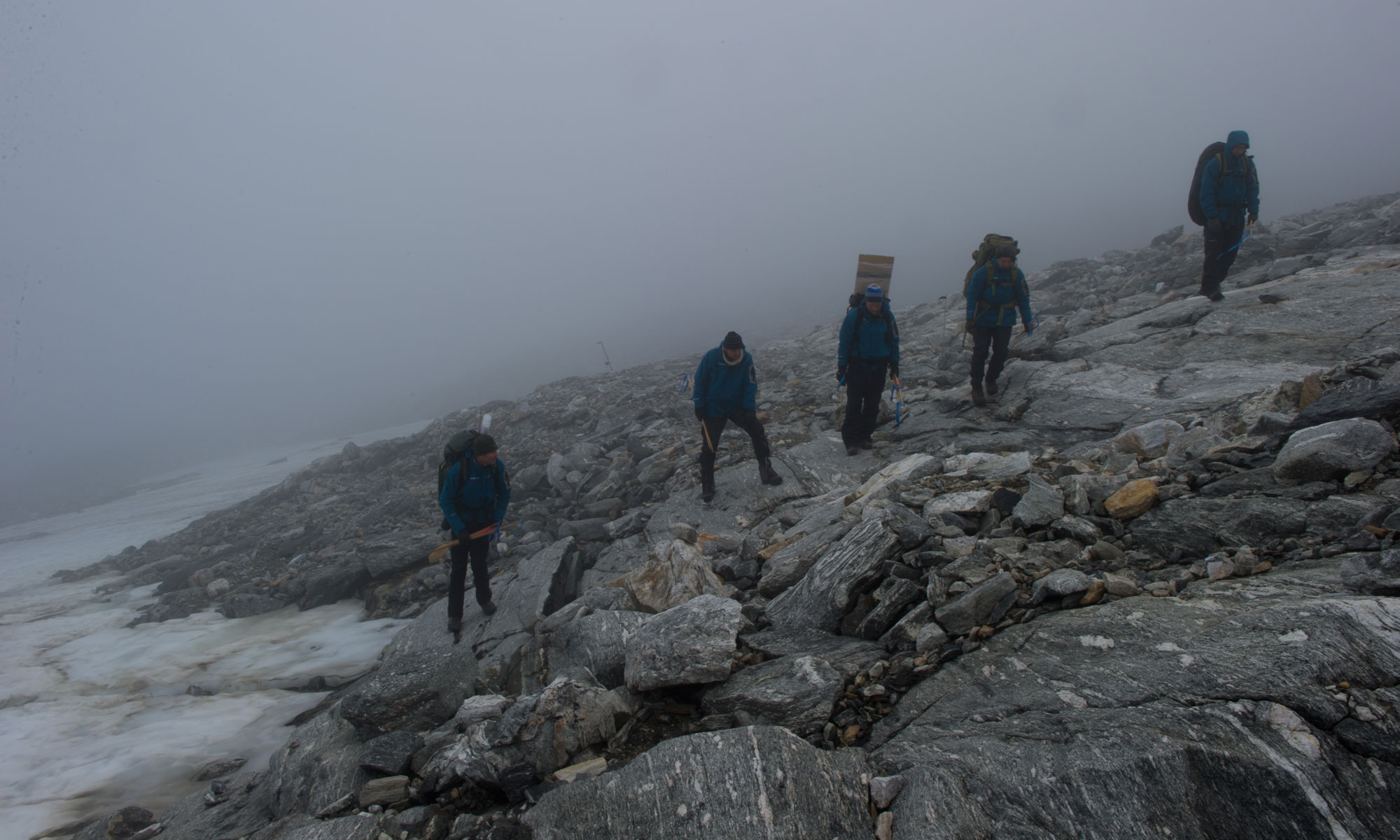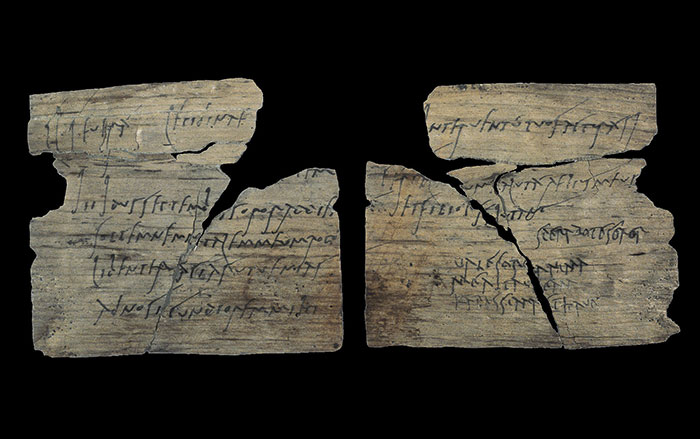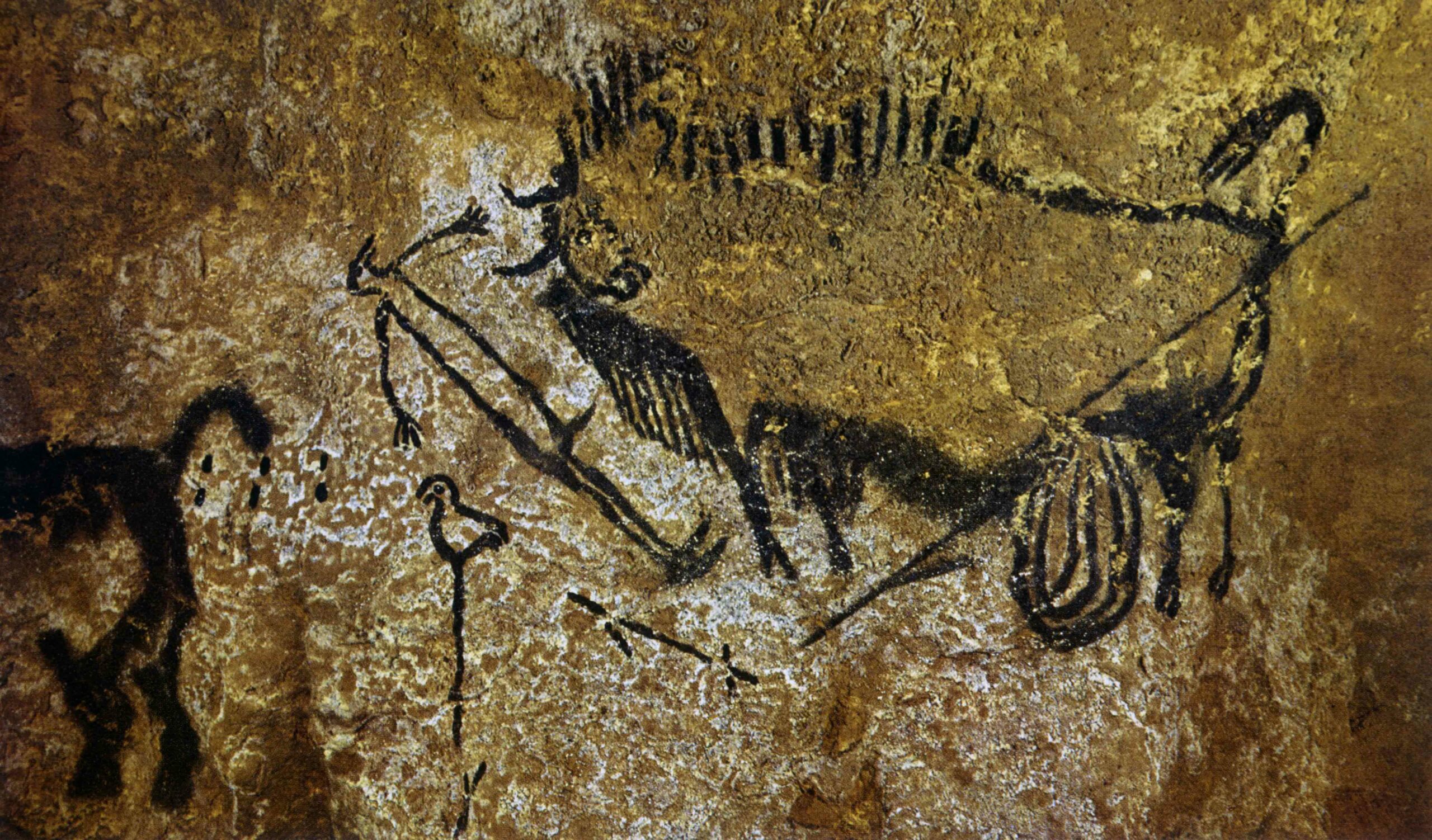
Last September, as University of Warsaw archaeologist Milosz Giersz’s team dug through rubble from the top of the biggest pyramid at the site of El Castillo de Huarmey in northern Peru, they uncovered a ceremonial chamber with a mudbrick throne inside. Below the chamber was more than 30 tons of stone fill. After removing it, the team discovered that the fill covered the only known unlooted imperial tomb belonging to the Wari, the first Andean people to forge an empire, which lasted from A.D. 700 to 1000.
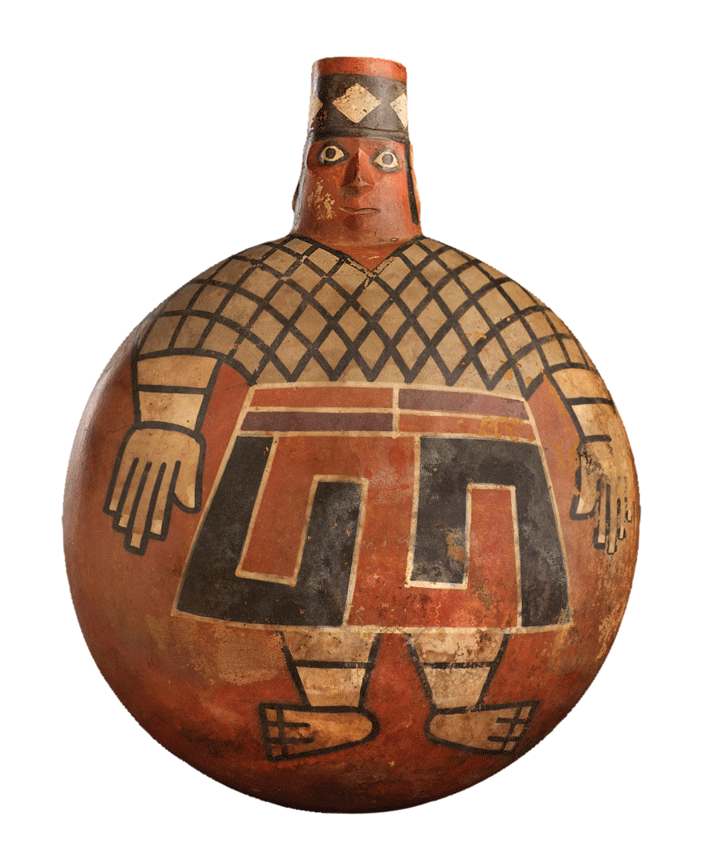
Fearing that the discovery would attract looters, the team excavated in secret and eventually found the remains of three Wari queens, one of whom was buried with a child. They also discovered the skeletons of 53 other noblewomen wrapped in burial shrouds, and six with no wrapping who were found lying facedown. “They were probably thrown in as sacrifices as the tomb was closed,” says Giersz. Among the rich array of 1,200 grave goods were silver bowls, bronze axes, and painted ceramics from all over the Andes. The queens were also buried with gold implements for sewing textiles. Since the Inca modeled their empire and many of their customs on the Wari, Giersz says studying the tomb may give archaeologists a better idea of how Inca queens were buried hundreds of years later.


